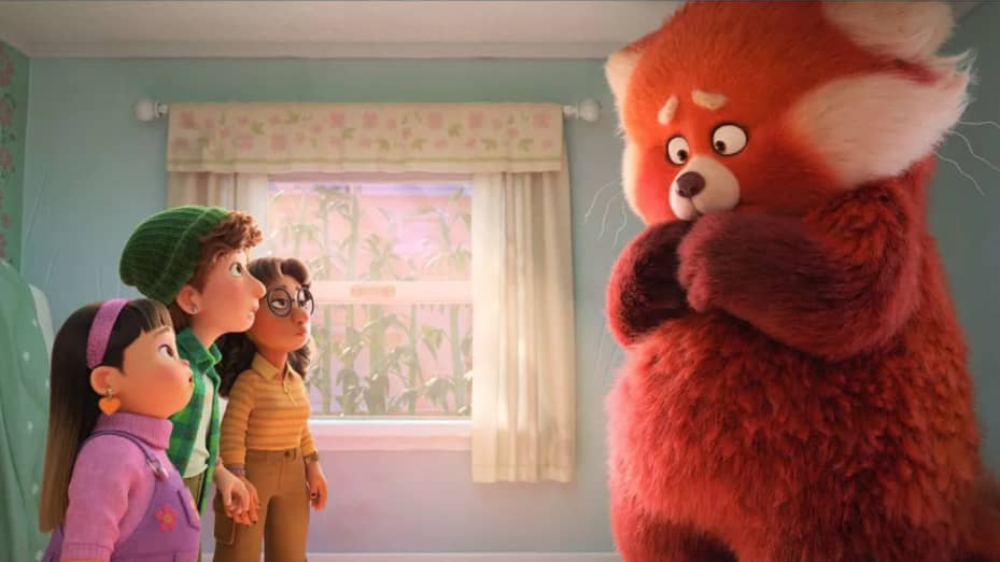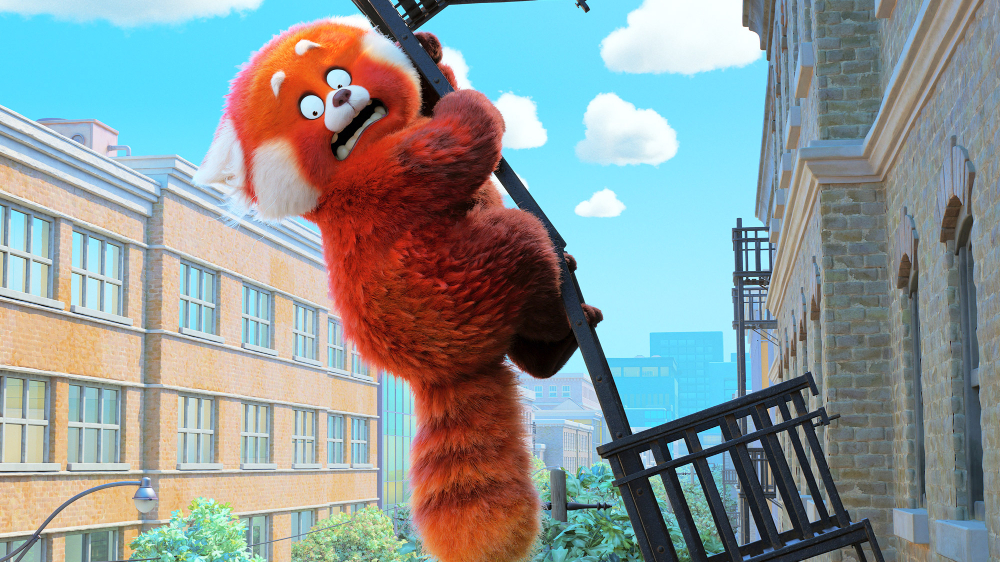
About a week and a half ago, Disney announced that it would be relegating yet another Pixar movie to its streaming platform. Turning Red was supposed to be the first theatrical Pixar flick since … um … wait, I know this one. Soul? No. Luca? No.
Onward! Right, it was Onward, in March of 2020. That was the last time Disney put one of Pixar’s movies in multiplexes, and the folks at Pixar thought for sure that Turning Red would be their ticket back into theaters. Sadly, this is not the case, thanks to Omicron.
When the announcement came down from Splash Mountain (or somewhere nearby), there were more than a few people who wondered if perhaps it had something to do with the plot, which follows a Chinese-Canadian girl who turns into a giant red panda whenever she gets too excited or stressed out. The idea of it being an Asian-themed storyline raised some eyebrows and had some people wondering if perhaps race had something to do with it. Especially since the Latinx-themed Disney Animation feature Encanto was put into theaters with an exclusive 30-day window in the fall.
While I suppose this is possible — remember, please, that I am rather attuned to ethnic or racial slights, even if they’re not directed specifically at me — it feels somewhat far-fetched to me. Not because Disney might be somehow biased against Asian cultures, but because Disney cares most of all about making money. To be clear, I don’t believe for a second that Disney has any kind of anti-Asian bias — or any bias, for that matter — because if there was one, the company wouldn’t have allowed Pixar to spend $150-200 million on a story centered on a young Asian girl.
But let’s set that aside and focus on the other side of it. The bottom line part.

A couple of weeks ago, I wrote about what Disney would look like with Bob Chapek taking over for Bob Iger. I said that Disney’s priorities would remain its theme parks and assorted properties (stores, cruises, and so on), as well as the continued rise of Disney Plus, which is almost certainly behind Disney’s decision to have Turning Red bypass theaters. The streamer can surely survive on new Marvel and Star Wars content, but it needs original animated features if it wants to truly thrive.
Besides, if we know anything about what COVID has done to the entertainment business, it’s that the theatrical release model has forever been changed. The Academy of Motion Picture Arts and Sciences changed its rules for the 2020-21 Oscar season to allow streaming movies to be eligible for awards, saying at the time that this was a one-year-only thing. Those of us who pay attention to such pronouncements, though, were rather vocal that this was akin to closing the barn door after the horse has already split. The genie was out of the bottle. You can insert your favorite appropriate analogy to replace either of these two, but the point back then was that this wasn’t something that was going to change back. The streaming services — not just Netflix now, but Disney Plus and the others as well — were simply too powerful to allow the previous one-week-in-theaters requirement to be reinstated.
I’m not sure if you noticed this back when it was announced last May, but AMPAS put out a statement saying that, sure enough, the 2021-22 Oscar season would recognize movies that were never released in theaters and went directly to streaming. Score one for those of us paying attention to the inner workings of the film industry.
This is a perfect encapsulation of how things are changing in Hollywood. When a stodgy, get-off-my-lawn type of organization like AMPAS is willing to make this change, it should be a pretty good indication that there are larger things afoot here.

Which brings me back to Disney and Pixar and the invented controversy surrounding Turning Red. With all due respect, I just don’t buy the anti-Asian thing. If Disney thought it could make more money by putting the film in theaters, regardless of the subject matter, it would do so. Encanto was put into theaters in between the Delta and Omicron variants when things seemed like they were calming down and people were going back to theaters, but even then, it was only for 30 days, after which the film began streaming on Disney+. If Encanto hadn’t yet been released but was on the schedule for the next month or two, I would wager a fair amount that Disney would make the decision as it did with Turning Red.
But for argument’s sake, let’s take it a step further. Is it possible that Omicron will have subsided more than a little by the middle of March? Sure. It might even be probable. But should Disney bet nine figures on promotional costs that it will? That people will be going back to the theater? That parents will be taking their children to the theater? That’s probably the biggest question, actually. Sure, Sing 2 has done pretty well for Universal, with a domestic haul of $115 million through its first month in theaters, but it hasn’t exactly set the world on fire, either. And that’s a sequel with an established fanbase! Turning Red, however, is a true original. Is Disney willing to bet $100 million-plus that parents will feel comfortable taking their kids back to theaters come March?
By making this move, the answer is a resounding “no.” Which means that Disney gets to kill two birds with one proverbial stone. Not only does the company save a fortune in marketing costs that may or may not pay off, but it continues to bolster the highest priority, that being the streaming service. If Pixar movies keep showing up on Disney Plus and not in theaters, guess where the parents are going to go to show these flicks to their kids? The key is getting more subscribers, and this is as good a way to do it as any.
After the news broke, it was reported that Pixar staffers were upset about the move, which makes sense, because you don’t make high-quality movies like the ones they make just to have them go straight to streaming or home video. But Disney isn’t, ultimately, out to make its staff happy. It’s out to make its subscribers happy, and even more importantly, to keep its shareholders happy. That means making money, and the studio’s Turning Red decision was undoubtedly made with that monetary mission in mind.
And just so there’s no mistake, I’m not defending it, I’m just explaining it. Analyzed purely from financial and risk-averse perspectives, it does make some amount of sense.
 Neil Turitz is a journalist, essayist, author, and filmmaker who has worked in and written about Hollywood for nearly 25 years, though he has never lived there. These days, he splits his time between New York City and the Berkshires. He’s not on Twitter, but you can find him on Instagram @6wordreviews.
Neil Turitz is a journalist, essayist, author, and filmmaker who has worked in and written about Hollywood for nearly 25 years, though he has never lived there. These days, he splits his time between New York City and the Berkshires. He’s not on Twitter, but you can find him on Instagram @6wordreviews.
You can read a new installation of The Accidental Turitz every Wednesday, and all previous columns can be found here.





